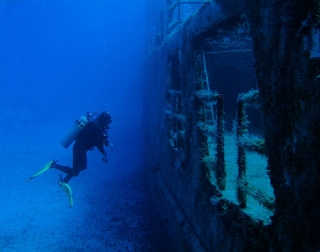
Caribbean Water Transparency
Coral growth on the ocean floor is intrinsically linked to sunlight exposure. Light propagation underwater depends on the water’s properties and the type of light.
At the water’s surface, light undergoes reflection and absorption. These physical properties mean light interacts with the sea in two ways: some reflects off the surface while some penetrates the water column. Within the aquatic medium, the penetrating light immediately refracts (bending due to density changes) and attenuates (losing intensity with depth).
For instance, in choppy or ice-covered seas, solar reflection increases, allowing less light to reach the seabed.

Beyond density changes between mediums, light is also affected by suspended particles – its clarity level. Seawater contains ammonia, nitrates, and proteins, with salinity and temperature altering its translucency. This transparency determines varying light absorption rates across global marine waters.
In the Caribbean, water transparency extends to 950 metres deep, compared to 800 metres in the Mediterranean and 700 metres in the Atlantic.
The Caribbean Sea maintains a surface temperature of 28ºC with salinity between 35-36 ppt (parts per thousand). These conditions foster the spectacular formation of this coral reef we love exploring through diving expeditions.
Reef Marine Life
Beyond being a natural marvel, the Maya Reef harbours an extraordinary array of species. Its biodiversity is both its hallmark and the strongest argument for its conservation.
It hosts over 500 fish and amphibian species including: butterflyfish, queen and rainbow parrotfish, blue angelfish, barracuda, lemon shark, hammerhead shark, bull shark, Clymene dolphin, spotted eagle ray, green moray eel, seahorses, hawksbill turtle, green turtle, loggerhead turtle, cleaner shrimp, hermit crabs, and West Indian manatees...

Vast coral colonies thrive here – hard and soft corals, algae, sponges, crustaceans, molluscs, and microorganisms. Standouts include giant anemones, prized black coral, brain coral, and dazzling fire coral.
The reef provides sanctuary for endangered species like green turtles, leatherback turtles, hawksbill turtles, Morelet’s crocodile, elkhorn coral, black coral, queen conch, and Antillean manatee. It’s also part of the dwindling whale shark’s habitat and sustains a major manatee population.
Thus, the Great Maya Reef is both a biodiversity hotspot and one of the planet’s most fragile ecosystems.
Reef Preservation
Like reefs worldwide, it faces threats from warm currents. Colourful corals rely on zooxanthellae (symbiotic organisms in algae, sponges, and molluscs) for nutrients and vibrant hues. When temperatures exceed 30ºC, zooxanthellae die, causing coral bleaching and severe damage.

Currently, over 42% of the Maya Reef’s coral community has bleached. This alarming statistic directly impacts tourism, underscoring the need for preventive measures. Organisations like the Caribbean Conservation Corporation work to safeguard this extraordinary ecosystem.
To continue enjoying this and other natural wonders, we must minimise our ecological footprint. Becoming eco-conscious divers allows us to practise scuba diving with the least environmental impact.

















